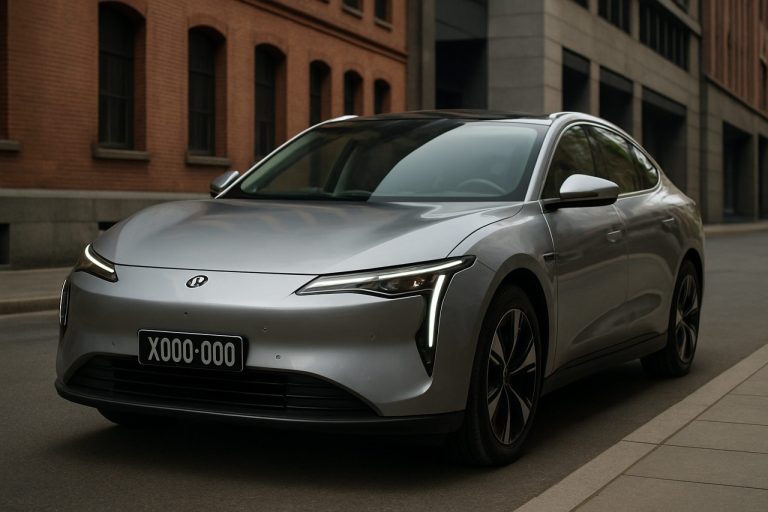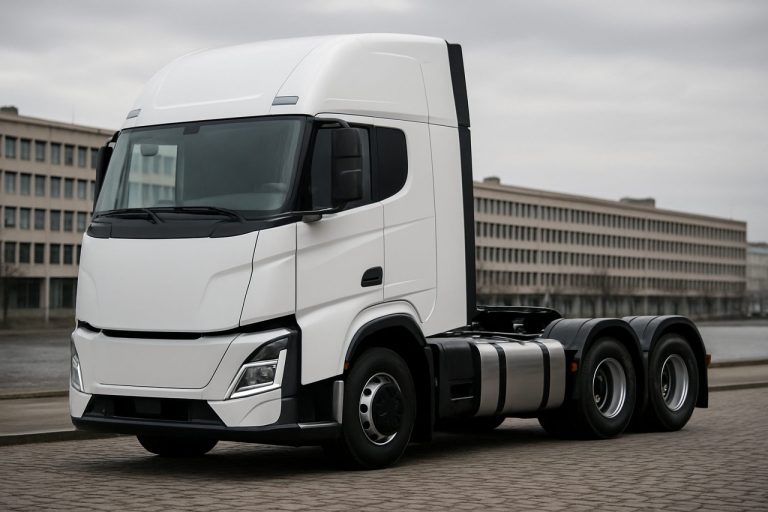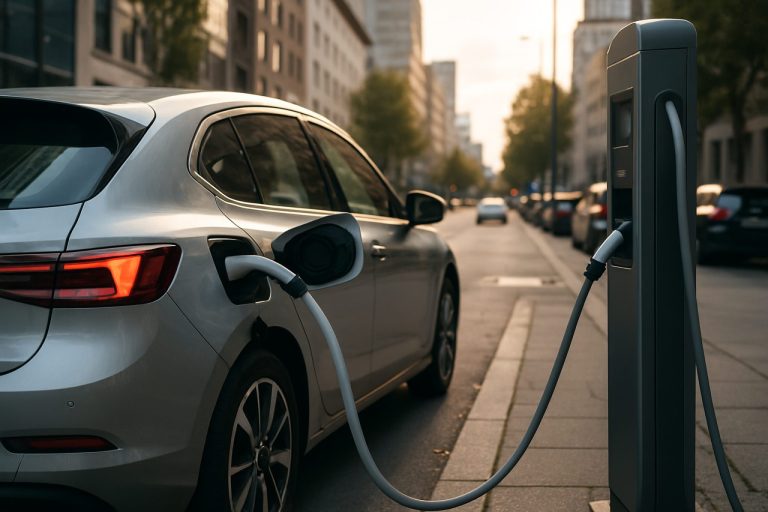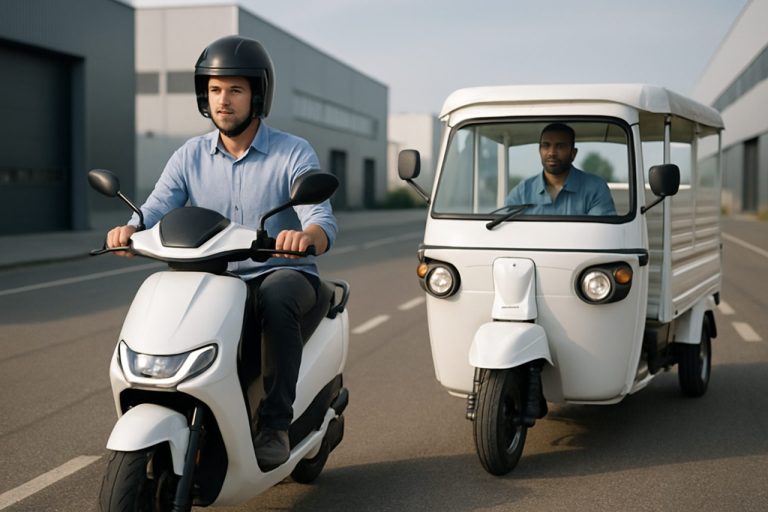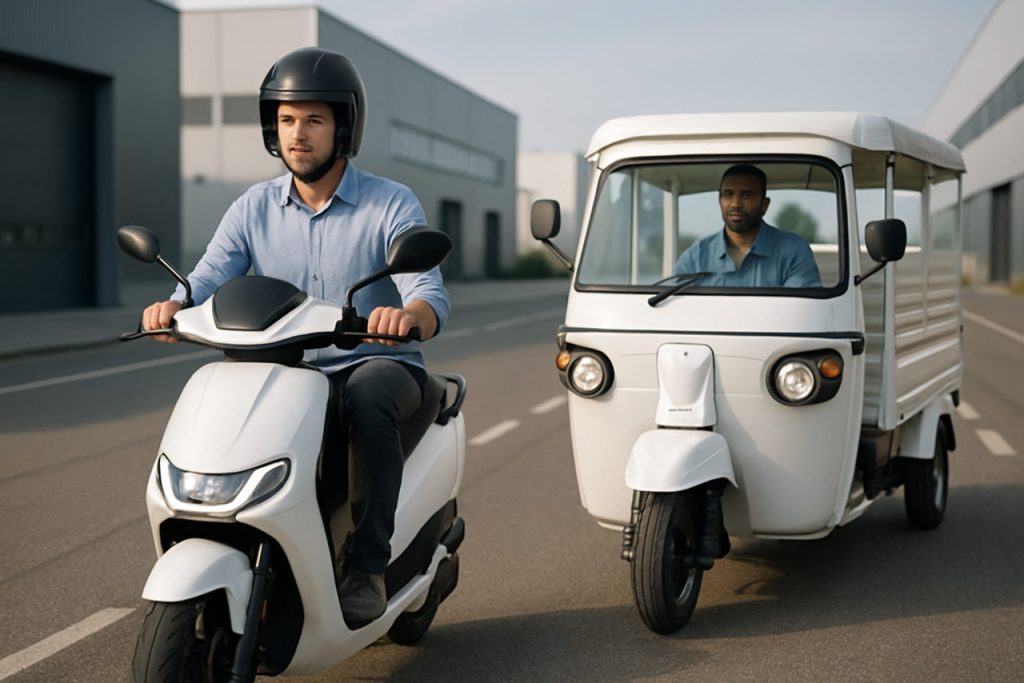
The Electric Two- and Three-Wheel Vehicle Revolution: 2025 Market Dynamics, Technology Shifts, and a 5-Year Outlook. Discover How Urban Mobility and Last-Mile Delivery Are Being Transformed by Rapid Electrification.
- Executive Summary: Key Findings and 2025 Highlights
- Market Size and Growth Forecast (2025–2030): CAGR and Volume Projections
- Regional Analysis: Leading Markets and Emerging Hotspots
- Competitive Landscape: Major Players and New Entrants
- Technology Innovations: Batteries, Motors, and Charging Solutions
- Policy, Regulation, and Incentives: Global and Local Impacts
- Consumer Adoption Trends: Urban Mobility and Delivery Sectors
- Supply Chain and Manufacturing Developments
- Sustainability and Environmental Impact
- Future Outlook: Opportunities, Challenges, and Strategic Recommendations
- Sources & References
Executive Summary: Key Findings and 2025 Highlights
The two- and three-wheel electric vehicle (EV) sector is poised for robust growth in 2025, driven by urbanization, regulatory support, and rapid technological advancements. These vehicles—encompassing electric scooters, motorcycles, mopeds, and rickshaws—are increasingly recognized as vital solutions for sustainable urban mobility, last-mile delivery, and affordable personal transport, especially in densely populated regions.
Asia-Pacific remains the epicenter of this market, with India, China, and Southeast Asian countries leading both production and adoption. In India, the government’s FAME II scheme and state-level incentives continue to accelerate the shift from internal combustion engine (ICE) to electric two- and three-wheelers. As of early 2025, India’s electric two-wheeler sales are expected to surpass 2 million units annually, with leading manufacturers such as Ola Electric, Hero MotoCorp, and Bajaj Auto expanding their EV portfolios and production capacities. Ola Electric is also advancing its gigafactory plans, aiming to become a global EV hub.
China continues to dominate global production and exports, with companies like Yadea and NIU Technologies reporting record sales and expanding into international markets. In 2024, Yadea announced annual sales exceeding 15 million units, reinforcing its position as the world’s largest electric two-wheeler manufacturer. Chinese three-wheel electric vehicles, especially for cargo and passenger transport, are also gaining traction in Africa and Latin America.
Southeast Asia is witnessing rapid electrification of motorcycle taxis and delivery fleets, with local players and global brands investing in battery swapping infrastructure and digital platforms. In Indonesia, Gojek and Grab are piloting large-scale electric two-wheeler fleets, supported by government targets for EV adoption.
In Europe, regulatory pressure on emissions and urban access restrictions are spurring demand for electric mopeds and cargo trikes. Companies such as Piaggio and Gogoro are expanding their presence, with Gogoro also rolling out its battery swapping network in new markets.
Key trends for 2025 include the proliferation of battery swapping stations, integration of IoT and telematics for fleet management, and the entry of automotive OEMs into the segment. The sector is expected to see double-digit annual growth rates globally, with two- and three-wheel EVs playing a pivotal role in decarbonizing urban transport and supporting new business models in shared mobility and logistics.
Market Size and Growth Forecast (2025–2030): CAGR and Volume Projections
The global market for two- and three-wheel electric vehicles (EVs) is poised for robust expansion between 2025 and 2030, driven by urbanization, government incentives, and the rapid electrification of last-mile mobility. In 2025, the combined annual sales of electric two- and three-wheelers are expected to surpass 60 million units worldwide, with Asia-Pacific accounting for the overwhelming majority of this volume. Key markets such as China, India, and Southeast Asian countries are leading the transition, supported by favorable policies, expanding charging infrastructure, and the proliferation of affordable models.
China remains the world’s largest producer and consumer of electric two-wheelers, with companies like Yadea Group Holdings and NIU Technologies reporting millions of units sold annually. In 2023, Yadea Group Holdings alone reported sales exceeding 15 million electric two-wheelers, and this figure is projected to grow steadily through 2025 and beyond. India, meanwhile, is experiencing a surge in electric two-wheeler adoption, with domestic manufacturers such as Ola Electric, Ather Energy, and Bajaj Auto scaling up production and launching new models to meet rising demand. The Indian government’s FAME II scheme and state-level incentives are expected to further accelerate market penetration in the coming years.
The three-wheeler segment, particularly electric rickshaws and cargo vehicles, is also witnessing significant growth. In India, companies like Mahindra Electric and Piaggio are expanding their electric three-wheeler portfolios, targeting both passenger and commercial applications. Southeast Asian nations, including Indonesia and Vietnam, are also ramping up efforts to electrify their two- and three-wheeler fleets, with local manufacturers and government initiatives playing a pivotal role.
Looking ahead to 2030, the compound annual growth rate (CAGR) for the global two- and three-wheel electric vehicle market is projected to range between 8% and 12%. By the end of the decade, annual sales could exceed 100 million units, with electric models accounting for a dominant share of new two- and three-wheeler registrations in major Asian markets. The continued entry of established automotive brands, such as Honda Motor Co. and Yamaha Motor Co., into the electric segment is expected to further boost market growth and innovation.
In summary, the period from 2025 to 2030 will likely see two- and three-wheel electric vehicles solidify their position as the primary mode of urban mobility in many regions, underpinned by strong policy support, technological advancements, and the growing commitment of leading manufacturers.
Regional Analysis: Leading Markets and Emerging Hotspots
The global market for two- and three-wheel electric vehicles (EVs) is experiencing rapid transformation, with Asia-Pacific leading both in adoption and manufacturing. In 2025, the region continues to dominate, driven by robust demand in countries such as China, India, and several Southeast Asian nations. These vehicles—primarily electric scooters, motorcycles, and rickshaws—are crucial for urban mobility, last-mile delivery, and affordable transportation.
China remains the world’s largest producer and consumer of electric two-wheelers, with annual sales consistently exceeding 40 million units. The country’s leadership is underpinned by a mature supply chain, strong government support, and the presence of major manufacturers such as Yadea Group Holdings and NIU Technologies. These companies are expanding their portfolios with high-performance models and investing in smart connectivity features. In 2025, China’s domestic market is expected to remain stable, while exports to Europe, Latin America, and Africa are projected to grow, as manufacturers seek new markets for their products.
India is emerging as a pivotal market for electric two- and three-wheelers, driven by government incentives, urban air quality concerns, and the need for cost-effective mobility. The Indian government’s FAME II scheme continues to subsidize electric vehicle purchases and charging infrastructure, spurring adoption. Leading Indian manufacturers such as Bajaj Auto, Ola Electric, and TVS Motor Company are scaling up production and launching new models tailored to local needs. The electric three-wheeler segment, in particular, is witnessing rapid growth, with companies like Mahindra Electric focusing on e-rickshaws and cargo vehicles for urban and peri-urban transport.
Southeast Asia is also becoming a hotspot, with Indonesia, Vietnam, and Thailand investing in local manufacturing and infrastructure. Companies such as VinFast in Vietnam are expanding their electric scooter offerings, while Indonesia’s government is incentivizing domestic production and battery supply chains.
In Europe, the adoption of electric two-wheelers is accelerating, particularly in urban centers where regulations favor low-emission vehicles. European brands and importers are increasingly sourcing from Asian manufacturers, while local players are innovating in design and battery technology. The market outlook for 2025 and beyond suggests continued growth, with Asia-Pacific retaining its leadership but Europe and Latin America emerging as significant demand centers for two- and three-wheel electric vehicles.
Competitive Landscape: Major Players and New Entrants
The competitive landscape for two- and three-wheel electric vehicles (EVs) in 2025 is characterized by rapid expansion, intense rivalry among established manufacturers, and the emergence of innovative new entrants. This sector, particularly vibrant in Asia, is witnessing a surge in both production and adoption, driven by urbanization, government incentives, and growing environmental awareness.
In the two-wheeler segment, Honda Motor Co., Ltd. remains a dominant force, leveraging its global brand and extensive dealer network to roll out electric scooters and motorcycles, especially in Southeast Asia and India. Yamaha Motor Co., Ltd. and Suzuki Motor Corporation are also scaling up their electric offerings, with Yamaha focusing on urban mobility solutions and Suzuki targeting affordable electric scooters for emerging markets.
India, the world’s largest two-wheeler market, is a hotbed of competition. Hero MotoCorp Ltd., the country’s largest two-wheeler manufacturer, has accelerated its electric transition, launching new models and investing in battery-swapping infrastructure. Bajaj Auto Ltd. and TVS Motor Company are also aggressively expanding their electric portfolios, with Bajaj’s Chetak and TVS’s iQube gaining significant traction. New entrants such as Ola Electric Mobility Pvt Ltd have disrupted the market with direct-to-consumer sales models and vertically integrated manufacturing, rapidly capturing market share and prompting incumbents to accelerate innovation.
In China, the world’s largest electric two- and three-wheeler market, NIU Technologies and Yadea Group Holdings Ltd. are leading the charge. NIU, known for its smart, connected scooters, is expanding internationally, while Yadea, the world’s largest electric two-wheeler manufacturer by volume, continues to dominate both domestic and export markets. Segway-Ninebot is also a significant player, leveraging its expertise in personal mobility devices to offer a broad range of electric scooters and mopeds.
The three-wheeler EV segment is gaining momentum, particularly for last-mile delivery and urban transport. Indian manufacturers such as Mahindra Electric Mobility Ltd. and Piaggio Vehicles Pvt. Ltd. (the Indian subsidiary of Italy’s Piaggio Group) are expanding their electric auto-rickshaw offerings, targeting both passenger and cargo applications. Meanwhile, BYD Company Ltd. is leveraging its battery technology to enter the three-wheeler market in Southeast Asia and Latin America.
Looking ahead, the competitive landscape is expected to intensify as global automakers, local champions, and agile startups vie for market share. Strategic partnerships, investments in battery technology, and innovative business models—such as battery swapping and subscription services—will be key differentiators in the evolving two- and three-wheel EV market through 2025 and beyond.
Technology Innovations: Batteries, Motors, and Charging Solutions
The two- and three-wheel electric vehicle (EV) sector is experiencing rapid technological innovation, particularly in batteries, motors, and charging solutions, as manufacturers respond to surging demand in both urban and peri-urban markets. In 2025, lithium-ion battery technology remains the dominant energy storage solution, but significant advancements are being made in battery chemistry, energy density, and cost reduction. Leading battery suppliers such as CATL and LG Energy Solution are scaling up production of high-nickel NMC and LFP cells tailored for two- and three-wheelers, offering improved cycle life and safety. Notably, CATL has announced new LFP battery packs with enhanced fast-charging capabilities and longer lifespans, targeting the high-volume Asian scooter and rickshaw markets.
Motor technology is also evolving, with a shift toward more efficient and compact hub motors and mid-drive systems. Companies like Bosch are supplying integrated electric drive units that combine motor, controller, and connectivity features, enabling smoother acceleration and regenerative braking. These systems are increasingly being adopted by major two-wheeler manufacturers such as Yadea and Hero Electric, both of which are expanding their electric product lines in 2025 with models featuring higher torque and improved range.
Charging infrastructure and solutions are a critical focus area, especially for densely populated regions where two- and three-wheelers are primary modes of transport. Battery swapping is gaining traction as a practical alternative to fixed charging, reducing downtime for commercial fleets and delivery services. Gogoro continues to expand its battery swapping network in Asia, with thousands of swap stations now operational and partnerships with local manufacturers to standardize swappable battery formats. Similarly, Ola Electric is piloting fast-charging and swapping stations across India, aiming to support its growing fleet of electric scooters and auto-rickshaws.
Looking ahead, the next few years are expected to bring further improvements in solid-state battery prototypes, ultra-fast charging solutions, and smart energy management systems. Industry leaders are investing in digital platforms for fleet management and predictive maintenance, leveraging IoT connectivity to optimize vehicle uptime and battery health. As regulatory support and consumer adoption accelerate, the two- and three-wheel EV segment is poised for continued technological transformation, with Asia remaining the epicenter of innovation and deployment.
Policy, Regulation, and Incentives: Global and Local Impacts
Policy frameworks and regulatory incentives are playing a pivotal role in accelerating the adoption of two- and three-wheel electric vehicles (EVs) worldwide, especially as governments seek to address urban air quality, energy security, and climate targets. In 2025 and the coming years, these measures are expected to further shape market dynamics, technology choices, and consumer behavior in both developed and emerging economies.
In Asia, which accounts for the vast majority of global two- and three-wheeler sales, national and local governments are intensifying their support for electrification. India, the world’s largest market for two- and three-wheelers, continues to expand its Faster Adoption and Manufacturing of Electric Vehicles (FAME) scheme, offering direct purchase subsidies, tax exemptions, and incentives for domestic manufacturing. The government’s 2024-2025 budget reaffirmed its commitment to e-mobility, with a focus on last-mile connectivity and urban air quality improvement. State-level policies, such as those in Delhi and Maharashtra, provide additional benefits including registration fee waivers and dedicated charging infrastructure, further boosting adoption rates. Leading Indian manufacturers such as Bajaj Auto, TVS Motor Company, and Ola Electric are actively scaling up production and introducing new models in response to these incentives.
China, home to the world’s largest electric two-wheeler fleet, maintains strict emissions and licensing regulations that favor electric models over internal combustion engine (ICE) vehicles. Local governments in major cities continue to restrict ICE two-wheelers while offering subsidies, tax breaks, and access privileges for electric alternatives. Companies such as NIU Technologies and Yadea Technology Group are benefiting from these policies, expanding both domestic and export operations.
In Southeast Asia, countries like Indonesia, Thailand, and Vietnam are rolling out national roadmaps and fiscal incentives to localize EV manufacturing and stimulate demand. Indonesia’s government, for example, is offering tax holidays and import duty exemptions for electric two- and three-wheelers, aiming to become a regional production hub. Local players such as GESITS are emerging in response to these supportive measures.
In Europe, regulatory pressure is mounting through low-emission zones, urban access restrictions, and incentives for zero-emission vehicles. The European Union’s “Fit for 55” package and national policies in countries like France, Italy, and Spain are encouraging the shift to electric mopeds and scooters, with manufacturers such as Piaggio Group and Gogoro (active in battery swapping partnerships) responding with expanded electric offerings.
Looking ahead, the interplay of policy, regulation, and incentives will remain a decisive factor in the pace and scale of two- and three-wheel EV adoption. As governments refine their approaches—balancing fiscal support with local content requirements and infrastructure investment—the sector is poised for continued growth and innovation through 2025 and beyond.
Consumer Adoption Trends: Urban Mobility and Delivery Sectors
The adoption of two- and three-wheel electric vehicles (EVs) is accelerating rapidly in urban mobility and delivery sectors, particularly across Asia, Europe, and parts of Latin America. As of 2025, these vehicle types are at the forefront of the global shift toward sustainable urban transportation, driven by regulatory incentives, cost savings, and evolving consumer preferences.
In Asia, especially in India and China, two- and three-wheel EVs dominate the electric mobility landscape. India’s electric two-wheeler market is led by companies such as Ola Electric, Ather Energy, and Bajaj Auto, all of which have expanded their product lines and production capacities in response to surging demand. The Indian government’s FAME II scheme and state-level incentives have further accelerated adoption, with electric two-wheelers accounting for over 5% of total two-wheeler sales in 2024 and projected to surpass 10% by 2026. In the three-wheeler segment, companies like Mahindra Electric and Piaggio are scaling up electric rickshaw and cargo vehicle offerings, targeting both passenger and last-mile delivery markets.
China remains the world’s largest market for electric two- and three-wheelers, with manufacturers such as NIU Technologies and Yadea producing millions of units annually. These vehicles are integral to urban commuting and delivery services, with adoption rates exceeding 80% in some city centers. The Chinese government’s continued support for electrification, including restrictions on internal combustion engine (ICE) scooters in urban areas, is expected to sustain high growth rates through 2025 and beyond.
In Europe, the urban delivery sector is a key driver of two- and three-wheel EV adoption. Companies like Askoll (Italy) and Silence (Spain) supply electric scooters and cargo trikes to logistics providers and food delivery platforms. Regulatory measures, such as low-emission zones in cities like Paris and London, are prompting delivery fleets to electrify rapidly. By 2025, electric mopeds and cargo trikes are expected to represent a significant share of new vehicle registrations in major European cities.
Looking ahead, the outlook for two- and three-wheel EVs in urban mobility and delivery is robust. Battery technology improvements, expanding charging infrastructure, and falling total cost of ownership are expected to further boost consumer and commercial adoption. Major players are investing in connected vehicle features and battery swapping networks, aiming to enhance convenience and operational efficiency. As cities worldwide intensify efforts to reduce emissions and congestion, two- and three-wheel electric vehicles are poised to play a pivotal role in shaping the future of urban transportation.
Supply Chain and Manufacturing Developments
The supply chain and manufacturing landscape for two- and three-wheel electric vehicles (EVs) is undergoing rapid transformation as the sector responds to surging demand, regulatory shifts, and technological advancements. In 2025, Asia—particularly India and China—remains the epicenter of both production and innovation for these vehicle categories. India, the world’s largest market for two- and three-wheelers, is witnessing accelerated electrification, driven by government incentives, urban air quality mandates, and the expansion of domestic manufacturing capacity.
Key Indian manufacturers such as Bajaj Auto, TVS Motor Company, and Hero Electric are scaling up their EV production lines, investing in vertically integrated supply chains to secure battery cells, motors, and controllers. Ola Electric has established one of the world’s largest two-wheeler EV manufacturing facilities, with a stated annual capacity of several million units, and is increasingly sourcing key components domestically to reduce reliance on imports. These companies are also forming strategic partnerships with battery suppliers and electronics manufacturers to localize critical components, a move further encouraged by India’s Production Linked Incentive (PLI) schemes for advanced chemistry cell (ACC) battery manufacturing.
In China, the world’s leading producer and exporter of electric two- and three-wheelers, companies such as Yadea and NIU Technologies are expanding their global footprint. These firms benefit from a mature domestic supply chain, robust battery manufacturing infrastructure, and government support for both domestic sales and exports. Chinese manufacturers are increasingly targeting Southeast Asia, Europe, and Latin America, leveraging cost advantages and rapid product development cycles.
Supply chain resilience is a central focus in 2025, as manufacturers seek to mitigate risks from geopolitical tensions and raw material price volatility. Battery cell sourcing, particularly for lithium and nickel, remains a challenge, prompting investments in recycling and alternative chemistries. Companies are also adopting modular vehicle architectures to streamline assembly and enable flexible production in response to shifting market demands.
Looking ahead, the next few years are expected to see further localization of supply chains, increased automation in assembly plants, and the emergence of new battery technologies tailored for two- and three-wheel EVs. The sector’s manufacturing ecosystem is likely to become more regionalized, with major players in India and China continuing to dominate, but with growing participation from Southeast Asian and African manufacturers as local demand rises and technology transfer accelerates.
Sustainability and Environmental Impact
The transition to electric two- and three-wheel vehicles is a pivotal element in global efforts to reduce urban air pollution and greenhouse gas emissions, particularly in rapidly urbanizing regions. As of 2025, these vehicles—encompassing electric scooters, motorcycles, and rickshaws—represent the largest and fastest-growing segment of the electric mobility market, especially in Asia and parts of Africa and Latin America.
In countries such as India, Vietnam, and Indonesia, two- and three-wheelers are the primary mode of daily transport for millions. The electrification of this segment is therefore critical for sustainability. For example, Ola Electric, a leading Indian manufacturer, has scaled up production of its electric scooters, aiming to deliver millions of units annually. The company’s manufacturing facility, dubbed the “Futurefactory,” is designed to be carbon-negative and is powered by renewable energy, underscoring the sector’s commitment to environmental responsibility.
Similarly, Hero Electric, another major Indian player, has expanded its portfolio of electric two-wheelers and is investing in battery recycling and second-life programs to minimize environmental impact. In Southeast Asia, VinFast of Vietnam is rapidly increasing its electric scooter output, targeting both domestic and international markets, and has committed to sustainable manufacturing practices.
Three-wheel electric vehicles, particularly e-rickshaws, are also gaining traction as a sustainable alternative to traditional petrol and diesel-powered models. Piaggio, an Italian manufacturer with a significant presence in India, has introduced electric versions of its iconic Ape three-wheeler, focusing on reducing urban emissions and noise pollution.
The environmental benefits of this shift are substantial. According to industry data, replacing a conventional two-wheeler with an electric equivalent can reduce annual CO2 emissions by up to 1 ton per vehicle, depending on the energy mix used for charging. The widespread adoption of electric two- and three-wheelers is also expected to significantly lower particulate matter and NOx emissions in congested cities, improving public health outcomes.
Looking ahead, the outlook for 2025 and the following years is optimistic. Governments in key markets are offering incentives, mandating stricter emission standards, and investing in charging infrastructure. Companies such as Bajaj Auto and TVS Motor Company are expanding their electric portfolios, while battery technology improvements are expected to further enhance the sustainability profile of these vehicles. As a result, the sector is poised to play a central role in the decarbonization of urban transport worldwide.
Future Outlook: Opportunities, Challenges, and Strategic Recommendations
The two- and three-wheel electric vehicle (EV) segment is poised for significant transformation in 2025 and the following years, driven by urbanization, regulatory shifts, and evolving consumer preferences. This sector, encompassing electric scooters, motorcycles, and rickshaws, is particularly vital in densely populated regions across Asia, Africa, and parts of Europe, where such vehicles are integral to daily mobility and last-mile logistics.
Opportunities: The global push for decarbonization and stricter emission standards is accelerating the adoption of electric two- and three-wheelers. In India, the world’s largest market for these vehicles, government incentives and state-level policies are fostering rapid electrification. Major manufacturers such as Bajaj Auto, TVS Motor Company, and Ola Electric are expanding their electric portfolios and scaling up production capacity. In Southeast Asia, companies like VinFast are investing in both domestic and export-oriented electric scooter production. Meanwhile, in Europe, brands such as Piaggio are leveraging their established presence to introduce new electric models tailored for urban mobility.
The commercial segment, particularly electric three-wheelers (e-rickshaws and cargo vehicles), is witnessing robust demand from e-commerce and delivery services. Companies like Mahindra Electric are targeting fleet operators with purpose-built electric three-wheelers, capitalizing on lower operating costs and regulatory support for clean urban logistics.
Challenges: Despite strong momentum, several hurdles remain. Battery cost and supply chain constraints continue to impact affordability and scalability, especially in price-sensitive markets. The development of robust charging infrastructure is uneven, with urban centers advancing faster than rural areas. Additionally, the sector faces competition from improved internal combustion engine (ICE) models and hybrid alternatives, which may slow the pace of electrification in certain regions.
Quality and safety standards are also under scrutiny, as rapid market expansion has led to the proliferation of low-cost, unregulated imports in some countries. Industry bodies and leading manufacturers are working to establish stricter certification and testing protocols to ensure consumer trust and long-term viability.
Strategic Recommendations: To capitalize on emerging opportunities, manufacturers should prioritize localizing battery production and supply chains, invest in R&D for affordable, high-performance models, and collaborate with governments to expand charging networks. Partnerships with fleet operators and digital platforms can accelerate adoption in commercial and shared mobility segments. Finally, ongoing engagement with regulatory bodies will be essential to shape supportive policies and harmonize standards across markets.
Sources & References
- Ola Electric
- Hero MotoCorp
- Bajaj Auto
- Yadea
- NIU Technologies
- Gojek
- Grab
- Piaggio
- Gogoro
- Yadea Group Holdings
- NIU Technologies
- Ola Electric
- Bajaj Auto
- Yamaha Motor Co.
- TVS Motor Company
- Yamaha Motor Co., Ltd.
- Suzuki Motor Corporation
- TVS Motor Company
- Segway-Ninebot
- Mahindra Electric Mobility Ltd.
- BYD Company Ltd.
- CATL
- Bosch
- GESITS
- Askoll
- Silence
